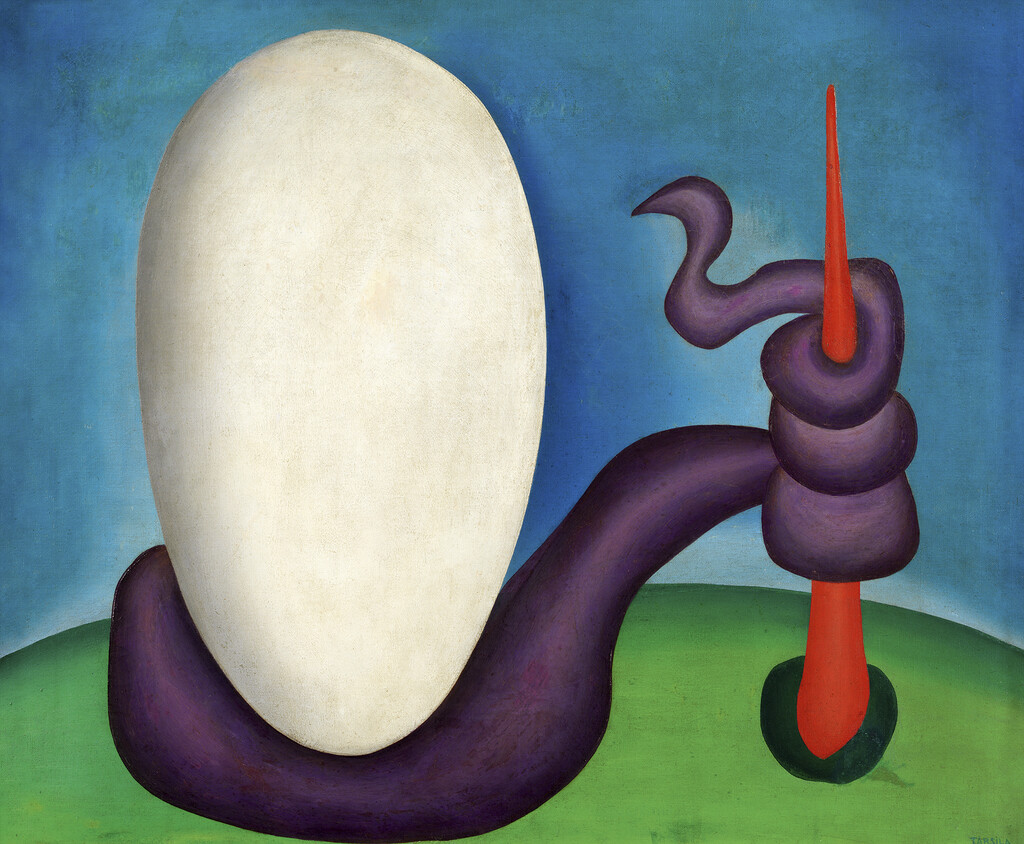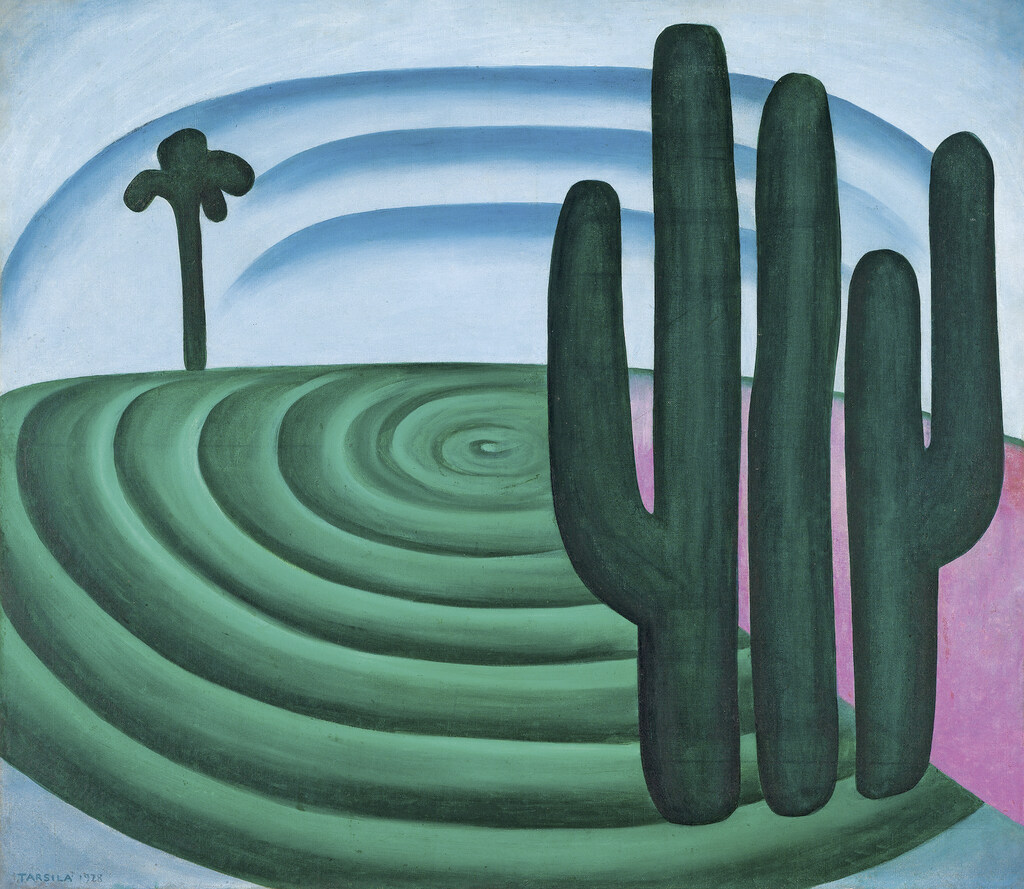Cannibal Brazil
In 1928, the figure of Abaporu (“man who eats [human flesh],” in the indigenous Tupi-Guarani language) gave rise to the Anthropophagic movement. Referring to the indigenous practice of devouring others in order to assimilate their qualities, Anthropophagy describes metaphorically the way in which Brazilians appropriate foreign and colonizing cultures, reshaping them in a constructive manner.
From that moment on, Tarsila shuns the representation of popular themes and the geometries of Cubist origin in her work, choosing a syncretism that is more symbolic than narrative, in which a rich European and Brazilian repertoire is thereby “digested” and definitively transformed.
These paintings, which the artist described as “brutal and sincere,” elude an unambiguous reading and conventional coding. The natural and architectural elements blend in suggestive and evocative landscapes that transport viewers to magical and dreamlike dimensions, while the drawings are populated by “figures with enormous feet, succulent and swollen plants, and strange creatures that no naturalist could ever classify.”


